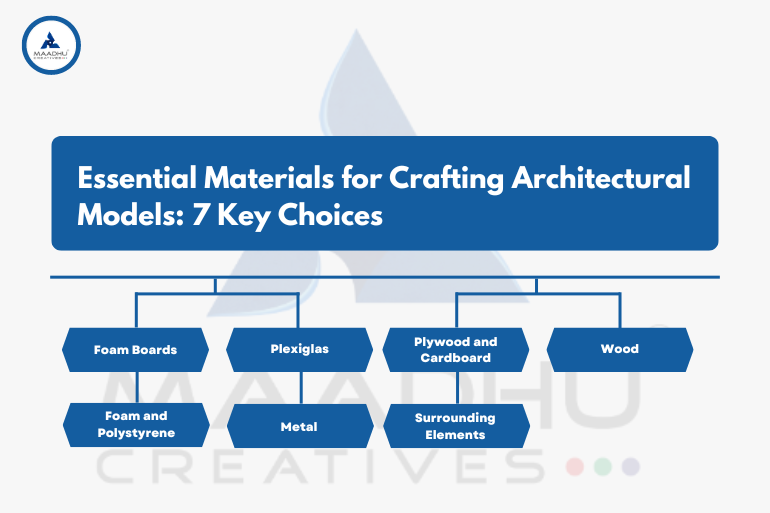Architectural models are essential tools that help architects and designers visualize their ideas before construction begins. They serve as a bridge between concept and reality, making the design process smoother and more intuitive. In this blog, we’ll explore seven popular materials used in architectural modeling, each offering unique benefits.
1. Foam Boards
Foam boards are a go-to choice for many model makers. These lightweight boards consist of a foam core between layers of paper or plastic, making them versatile and easy to work with.
Benefits:
-
User-Friendly: Simple to cut and shape, allowing for precise designs.
-
Affordable: Great for those on a budget, whether students or professionals.
-
Transportable: Their lightweight nature makes moving models hassle-free.
2. Plexiglas
For a realistic touch, Plexiglas is often used to represent glass in models. This clear acrylic mimics the appearance of glass, enhancing the overall look of your designs.
Advantages:
-
Clear Visualization: Helps illustrate how windows and facades will appear.
-
Durability: More resistant to shattering than traditional glass.
-
Customizable: Easily cut to fit various parts of your model.
3. Plywood and Cardboard
Both plywood and cardboard have long been staples in architectural modeling. Plywood offers strength and durability, while cardboard is flexible and lightweight.
Why Use Them?
-
Strength: Plywood is robust for long-lasting models; cardboard is ideal for simpler, temporary projects.
-
Finishing Options: Both can be painted or covered, offering creative possibilities.
-
Versatile Sizes: Available in many dimensions for tailored designs.
4. Wood
Wood adds a natural aesthetic to models, making it an excellent choice for designs that incorporate organic elements.
Key Benefits:
-
Authenticity: Provides a warm, realistic appearance.
-
Durability: Can withstand handling over time.
-
Detailing: Easy to carve for intricate designs.
5. Foam and Polystyrene
Lightweight and easy to manipulate, foam and polystyrene are excellent for creating detailed models.
Benefits:
-
Simplicity: Easy to cut and shape for complex designs.
-
Lightweight: Ideal for large models that need to be moved.
-
Cost-Effective: Generally affordable for various projects.
6. Metal
Incorporating metal, like brass or aluminum, can add elegance and precision to your models.
Advantages:
-
Precision: Allows for highly accurate cuts and details.
-
Durability: Strong and resistant to wear.
-
Elegant Finish: Enhances the professional look of presentations.
7. Surrounding Elements
Adding landscaping materials and miniatures, such as trees or people, enriches the model’s context and realism.
Why They Matter:
-
Realism: Help visualize how the building fits into its environment.
-
Scale: Provide context for the size and impact of the design.
-
Visual Appeal: Make the model more engaging and dynamic.
Conclusion
Choosing the right materials for your architectural models can significantly impact their functionality and appearance. By understanding the unique strengths of each material, you can create designs that truly resonate. For a deeper exploration, check out the complete article here!
